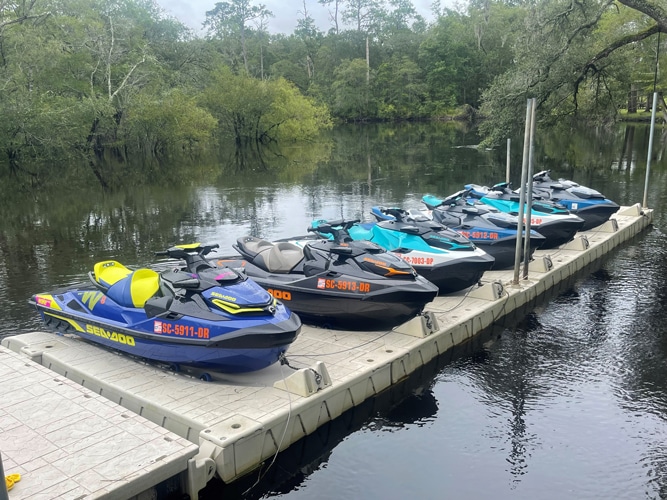
At East Coast Jet Ski Adventures, we take the safety of our customers very seriously. Every jet ski rental we conduct includes a brief safety course, because no one wants accident or injuries ruining their vacation.
Personal watercrafts or PWCs are safe – this is not a dangerous or even risky undertaking – but they are not toys, and accidents can happen when operators don’t respect them. Below are some guidelines to follow to avoid a watercraft accident ruining your day.
There’s very little equipment required to safely operate a jet ski, but a few items will keep you protected and more comfortable.
All of these essential items will be on your jet ski or provided by East Coast Jet Ski Adventures.
You are only required to wear a life jacket, but if you are jet skiing on a cooler day, a windbreaker might help reduce chill and friction. Gloves and footwear can provide additional purchase when driving at high speed, and glasses will protect your eyes from sun and spray. Always check the weather report so you can dress properly and be comfortable on your jet ski.
Operating a jet ski is meant to be fun, and PWC safety is meant to enhance, not hamper, your adventure. A few minutes in, and these tips will feel like second nature. Best of all, they are easy to implement and prevent injury. Being laid up in the hospital while everyone else is out enjoying the sun and water isn’t anybody’s idea of a good time, and taking a few common sense preoccupations when riding will keep that from happening.
Your guide will explain how to operate your jet ski before you set out during a brief safety course, but here are some tips to keep in mind during your ride. They’ll help you avoid accidents and injuries.
Avoiding accidents is easy as long as you listen to staff, keep aware of your surroundings, and use common sense. Our jet skis are powerful and fast, and we encourage you to take advantage of their speed! If you operate the ski properly and wear your life jacket, you should have no fear of sustaining an injury during your ride.
Should you have any questions about the precautions we take, our equipment, or the jet skis themselves, we encourage you to contact us here at East Coast Jet Ski Adventures.